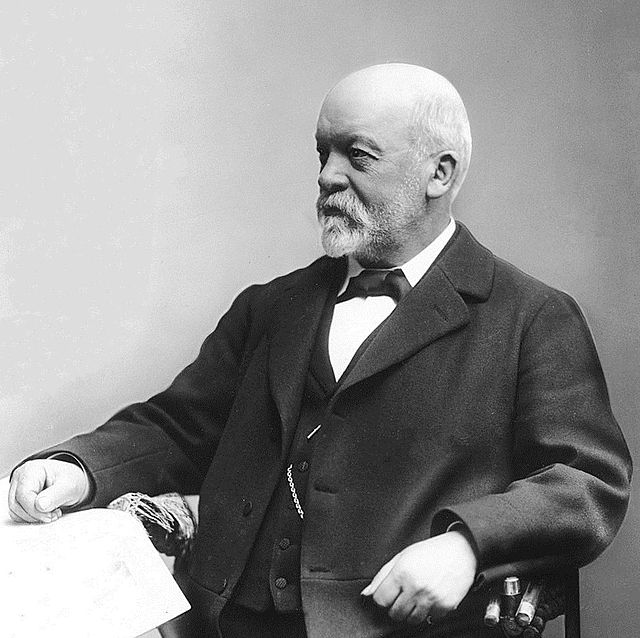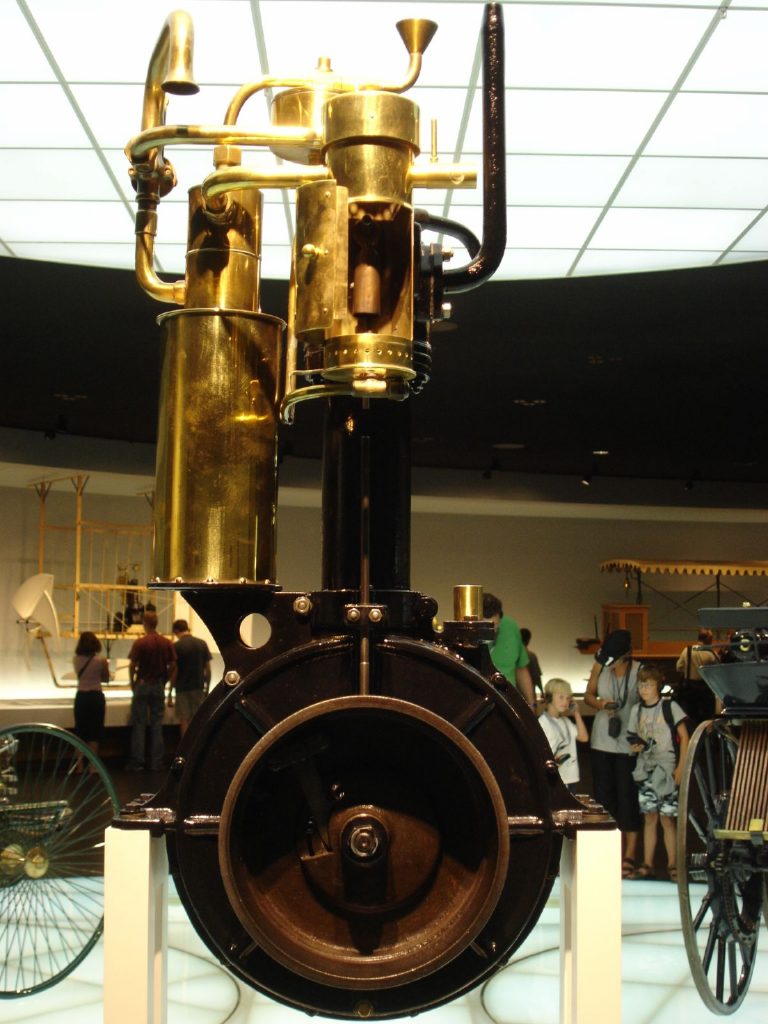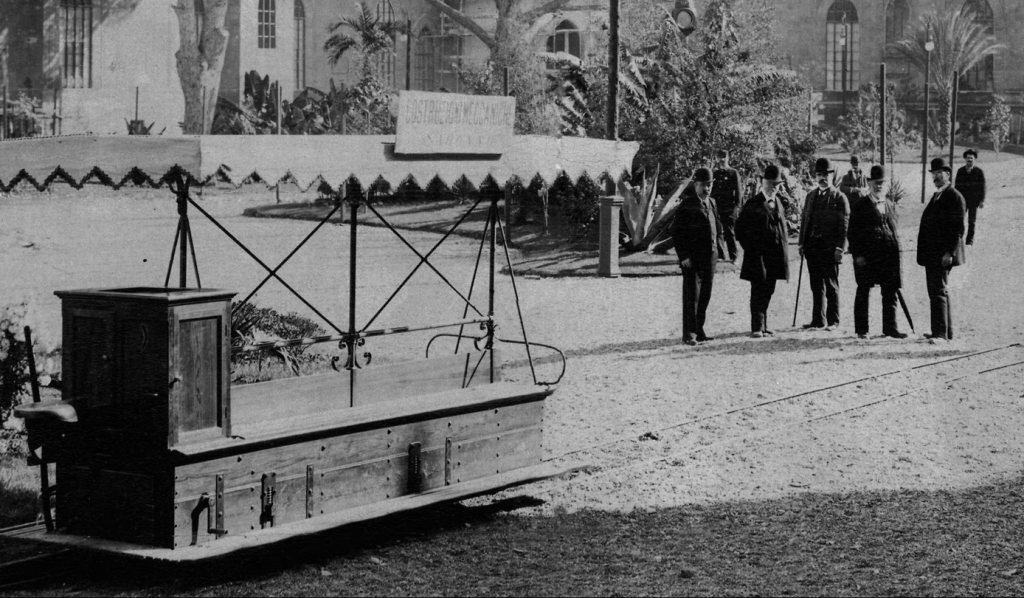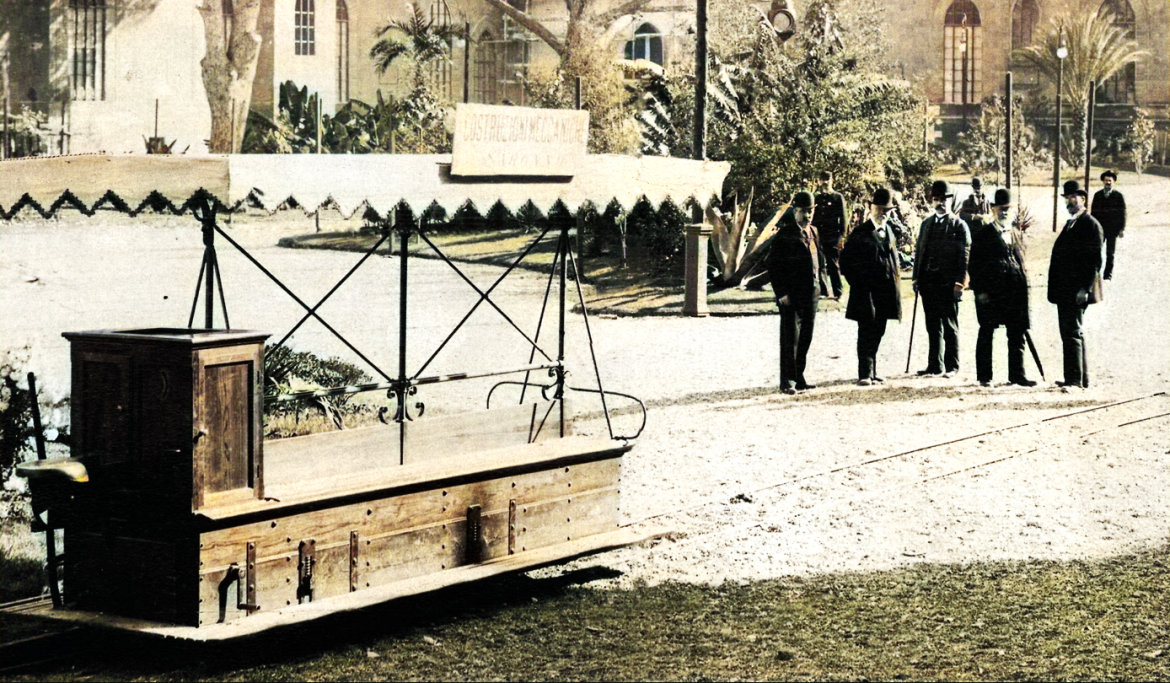This is not the story of a Southern belle oscillating between romantic delusions and the harsh truth of life written by Tennesse Williams but the precursor to urban mobility, rebranded by none other than Gottlieb Daimler.
Legend has it that Gottlieb Daimler would motorise anything and everything that stood still for long enough. Thanks to him, horses and mules traded in their tired ‘trot’ for a well-deserved ‘joyride’. Even though he is remembered in history as an automotive pioneer, Daimler experimented with a wide array of transportation systems in his early years.
Whether on water, on land, or in the air, Daimler has an impressive catalogue of vehicles that underwent serious motorisation in the 19th century – from horse-drawn carriages, motorcycles, trucks and buses to boats and aircraft – it’s commonly known that he tinkered with them all. But not a lot of people know about his charged dalliances with streetcars and locomotives.
Yes, Daimler once manufactured streetcars!
In 1887, Gottlieb Daimler manufactured a motor-driven draisine which ran on kerosene. It was in fact the very first piece of rolling stock with an internal combustion engine. With 1.1 horsepower and a top speed of 20 kmph, the four-seater Daimler Motor-Draisine did not position itself as a serious competition for the railroad but was a remarkable feat nonetheless.

In the very same year, Daimler’s six-seat narrow-gauge streetcar running at a modest speed of 16 kmph debuted at the Cannstatter Wasen fairground, marking a significant milestone in transportation history. In an era primarily dominated by horse-drawn carriages and steam-powered engines, the concept of a gasoline-powered streetcar not only seemed ballsy but also managed to elicit some very colourful opinions from contemporaries.
A popular magazine of the time “Die Gartenlaube” published a detailed account of the ride in Daimler’s streetcar:
“Once the vehicle stops at its destination after a speedy journey, and is no longer to be used for the rest of the day, the conductor carries off the box that contains the entire machine that moved the vehicle as if it was being pulled by a spirited horse.”
The horse was indeed “spirited” and the feat – remarkable. The box in question housed the gasoline engine developed by Daimler and Wilhelm Maybach in 1885. Also known as the “grandfather clock” due to its unique appearance, the engine was registered for a patent in 1886. Interestingly, it was this particular engine that marked the genesis of the internal combustion engine as we know it today. The “Schwäbische Merkur,” the leading daily newspaper in the Kingdom of Württemberg back then, commended the “superbly successful” trips undertaken by Daimler’s experimental streetcar.
It’s safe to say that Daimler was quickly turning heads with his sweet little motorised ride. Referred to as the Waggonet, the small streetcar and the Grandfather Clock can be viewed in the Mercedes-Benz Museum.

From Berlin to Buenos Aires, Daimler’s streetcars and engines were exported to various places. In Stuttgart, where the hilly terrain posed severe challenges for horse or mule-drawn vehicles, Daimler’s streetcar proved to be a game-changer. Test drives on local tramway routes showcased its ability to easily navigate steep inclines. Upon which, newspapers like the ‘Schwäbische Kronik’ stated,
“The vehicle, which can transport up to 20 passengers, was able to maintain a steady velocity as it easily navigated the sharpest curves as well as straight stretches and inclines of about 2%.”
Shortly after that, Daimler’s engines were also integrated into the vehicles of the Württemberg State Railway, from where they made their way to rail networks throughout Germany and beyond. The Daimler streetcars were quite a hit at international trade fairs and expositions, including at the Vienna Prater (1890), the Esposizione Nazionale di Palermo in Sicily (1891/92), and the World’s Fair in Chicago (1893).

Despite their initial triumphs, the motorised streetcars had a short-lived era. The emergence of electrical catenary systems signalled a paradigm shift in the industry, relegating gasoline-powered streetcars to the margins of history. While the streetcar may have been a brief episode in the annals of Daimler’s 135-year history, its significance lies in its embodiment of innovation and ingenuity.
It’s interesting to note that while the Austrian subsidiary of Daimler Motoren Gesellschaft (Austro-Daimler) and the Berlin-Marienfelde plant briefly experimented with similar electrical catenary systems under the Mercedes Electrique variant, these efforts were soon abandoned. This outcome was the result of Daimler and Benz’s concentrated efforts on the staunch pillars of the Mercedes brand – opulent automobiles and personalised mobility.



